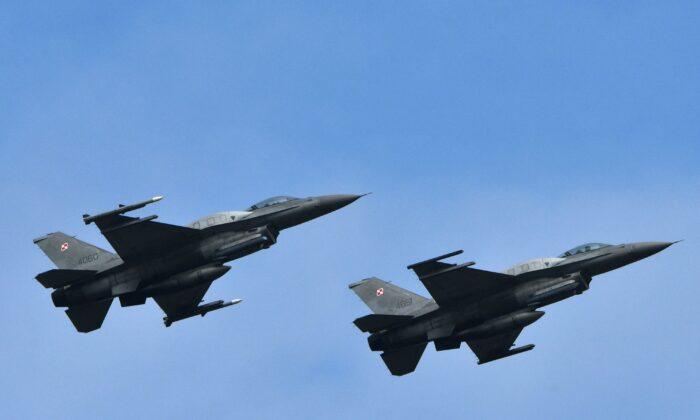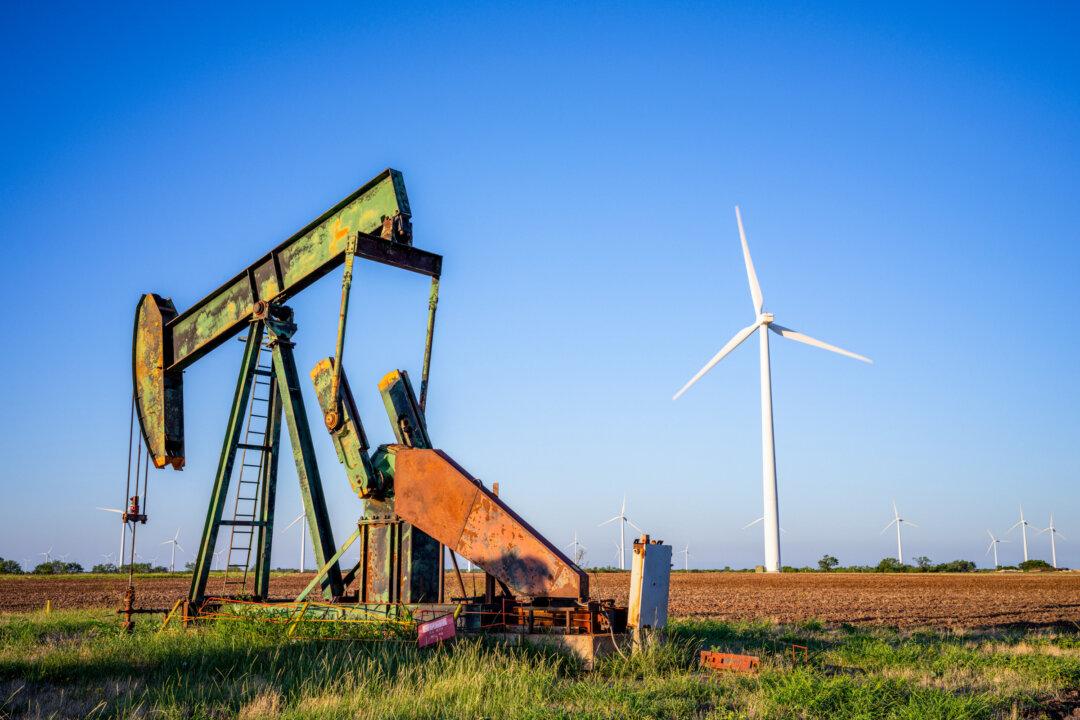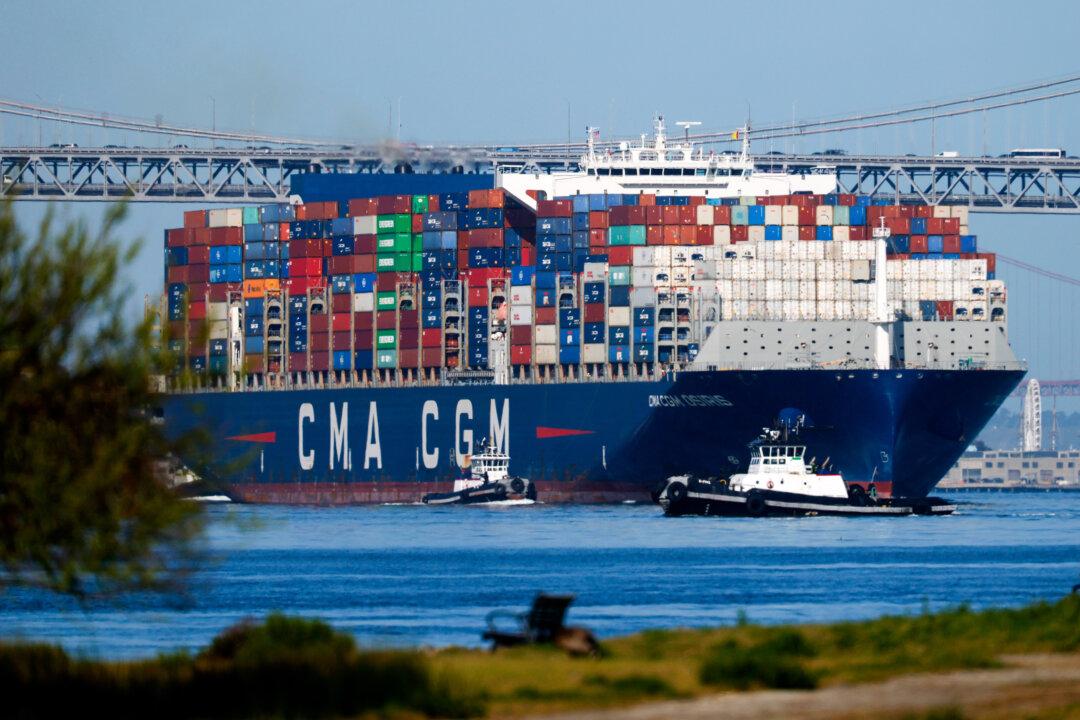The Biden administration will allow American-made F-16s to be sent to Ukraine to help Kyiv defend its skies for years to come, but they will play no role in its pending offensive to oust Russian invaders.
President Joe Biden on May 19 announced the United States would allow allies to provide fourth-generation F-16 Falcons and train Ukrainian forces in how to fly and maintain them.
Ukraine President Volodymyr Zelenskyy had been lobbying for the United States and its allies to provide the multi-role fighter for months. He apparently pried consent from Biden when they met during the May 19-21 Group of Seven (G7) summit in Hiroshima, Japan.
Austin and Milley thanked the Netherlands, Denmark, Norway, Belgium, Portugal, and Poland for offering to contribute F-16s or provide training for pilots and ground crews.
They said the response underscores the commitment of the Ukraine Defense Contact Group, a 54-nation alliance—including all 31 NATO states—that have collectively contributed more than $65 billion in equipment, munitions, training, and other assistance to Kyiv in response to Russia’s February 2022 invasion.
They also said that the F-16s won’t be arriving for months and when they do, there won’t be enough of them to really make a difference, downplaying the need for the fighters, as they have for months.

Too Late for Offensive, Too Few for Impact
Austin said it will take time to train pilots and crews to maintain and arm the fighter jets. “Planning and executing this training will be a significant undertaking, but the coordination of this contact group will help make that possible,” he said.Milley said since the beginning of the 15-month war, the emphasis has been—and remains—building Ukraine’s ground-based air defenses in mitigating Russia’s air superiority.
It was not only the most effective and swiftest solution, but an economical use of financial assistance being offered by the group, he said.
Ten fourth-generation F-16s collectively cost $1 billion, Miley said. Over their service-spans, it will cost another $1 billion to maintain them, he said.
“So, you’re talking about $2 billion for 10 aircraft,” Milley said. “The Russians have thousands of fourth- and fifth-generation fighters. So, if you’re going to contest Russia in the air, you’re going to need a substantial amount of fourth- and fifth-generation fighters.”
A lot of bucks for the jets, but not much relative bang, the four-star Army general said. “If you look at the cost curve and do the analysis, the smartest thing to have done is exactly what we did do, which is provide a significant amount of integrated air defense to cover the battle-space and deny the Russians the airspace. And that is exactly what happened.”
That doesn’t mean it’s a wasted investment, Milley said, noting the F-16s could be the foundation for a Ukraine Air Force that can take on the Russians head-to-head in the sky.
But that’s not happening anytime soon. It is “going to take a considerable length of time to build up an air force that’s the size and scope and scale that'll be necessary,” he said.

Priorities: Air Defense, Armor, Artillery
Immediate necessities, both said, are air defense systems, armored vehicles, and munitions.“One of Ukraine’s most urgent requirements is ground-based air defense,“ Austin said. ”And this contact group will continue driving hard to help Ukraine defend the skies. In recent weeks, Russia has intensified its sordid bombardment of Ukrainian cities and infrastructure. And the Kremlin’s cruelty only underscores Ukraine’s need for a stronger, layered ground-based air defense architecture.”
In recapping the 12th meeting of the group--a closed-door session attended remotely by defense ministers from more than 50 nations—Austin said Ukrainian Defense Minister Oleksii Reznikov requested resources to plug unnamed “critical capability gaps” and members agreed “to keep strengthening Ukraine’s position on the battlefield.”
This latest package includes $375 million in HIMARS [rocket launcher] ammunition, anti-tank systems, laser-guided rockets, heavy equipment transport, armored bridging systems, air-defense systems, and munitions, especially 155-millimeter artillery rounds, he said.
The package “also includes equipment that will integrate Ukraine’s legacy air-defense systems with air-defense launchers, missiles, and radars” from the group, Austin said.
Austin said in recent days Germany has pledged an additional $3 billion in aid, including more Leopard tanks, ammunition, and combat drones.
“Denmark also announced a significant new package. It includes air defense support and combat enablers such as mine-clearing vehicles, mobile field bridges, and recovery vehicles,” he said.
“France also has committed more light tanks and armored vehicles.”
The United States has trained nine motorized and mechanized brigades, “and continue to execute collective training for Ukrainian combat units,” said Austin, noting that 31 M1 Abrams training tanks from the United States arrived at an army base in Grafenwoehr, Germany, in early May.
Austin and Milley praised the “sustained resolve” of the member nations in the group, especially since all recognize it will require a long-term commitment to help Ukraine defend itself and rebuild afterward.
“Today, we committed to doing even more to support Ukraine’s fight for freedom,” Austin said.
“I came away from today’s meeting as confident as ever in the contact group’s resolve and sustained unity.”





